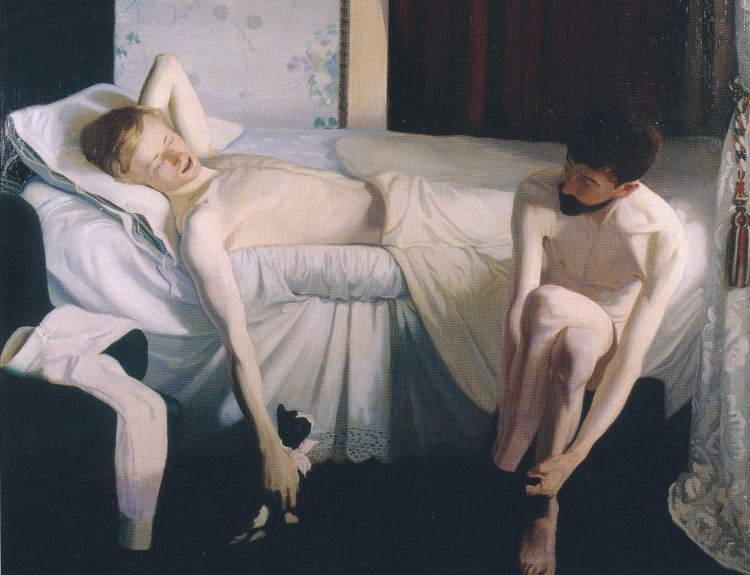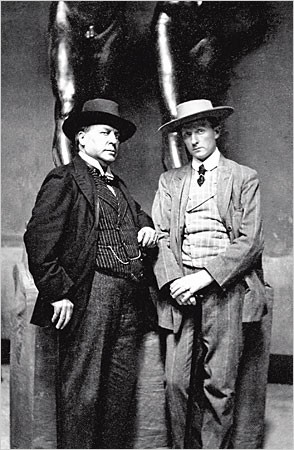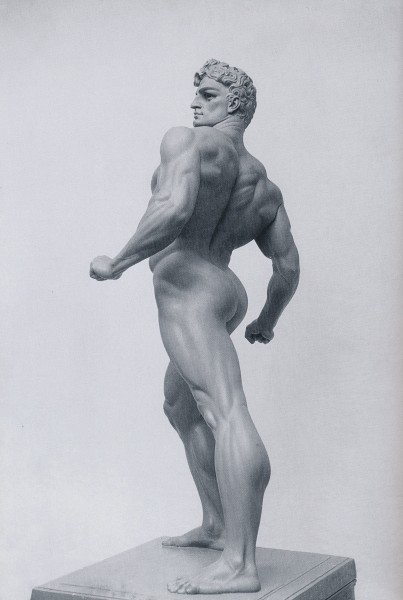Hendrik Christian Andersen
Sculptor Hendrik Christian Andersen (15.4.1872–19.12.1940) may be the only Norwegian to have an Italian museum dedicated to them: Museo H.C. Andersen is centrally located in the art metropolis Rome. Despite the abbreviation, Hendrik Christian Andersen is not to be confused with the more well-known danish storyteller and writer Hans Christian Andersen - Hendrik was a Norwegian-American sculptor by (almost) the same name, and the main attraction at Museo H.C. Andersen is the enormous sculptures, many of which are strongly homo-erotic.
Hendrik C. Andersen was born in Bergen, the son of wagoner Anders Andersen from Lærdal and Helene Monsine Monsen from Bergen, and grew up as the middle child of three brothers. The same year that Hendrik was born his father emigrated to the United States, and the following year, 1873, the rest of the family followed and settled on Rhode Island on the East Coast.
After attending art school in Boston, Andersen travelled Europe from 1894 until he settled in Rome in 1897, where he started creating his classical sculptures. He lived with his mother, his youngest brother Arthur, a pianist and composer, and Olivia Cushing, the wealthy widow of Andersens older brother Andreas, who died in 1902. In addition to Andersen’s towering sculptures, strongly influenced by Michelangelo, his great life project was The World Centre. His dream was to create a gigantic city which was to be filled with art, and thus bring out the best in mankind. This project of peace was to be built just south of Rome.
Letters from Henry James.
In 2004, two books were published that once again brought the Norwegian-American sculptor to the world’s attention. The first is Beloved Boy, a collection of the American author Henry James’ many letters to Hendrik C. Andersen. All of 87 letters from the world renowned author to his 29 years younger friend in the period 1899 to 1915 have been preserved, many of which are pure love letters.
The second is Colm Tóibín’s fascinating novel The Master, which is about Henry James, and in part his relationship with Andersen. The two men apparently only met six times, but the letters indicate a very close relationship, probably erotic in nature. Here follow two excerpts:
I am in town for a few weeks but I return to Rye April 1st, and sooner or later to have you there and do for you, to put my arm round you and make you lean on me as on a brother and a lover, and keep you on and on, slowly comforted or at least relieved of the first bitterness of pain – this I try to imagine as thinkable, attainable, not wholly out of the question. [---] Let all my tenderness, dearest Boy, do that. . . . (9.2.1902)
Dearest, dearest Boy, more tenderly embraced than I can say! – How woefully you must have wondered at my apparently horrid and heartless silence since your last so beautiful, noble, exquisite letter! [---] I only, for goodnight, for five minutes, take you to my heart. And I'm better, better, better, dearest Boy; don't think of my having been ill. Think only of my love and that I am yours always and ever Henry James. (28.2.1902)
House in Rome
In 1922, Andersen built his own house (or palazzo) in Rome - a large building at number 20, Via Pasquale Stanislao Mancini. When he died in 1940, aged 68, he left the house and about 400 works of art to the state of Italy - on the condition that his adopted sister would be permitted to live there until she died, which happened in 1978. After this followed an extensive restoration of the palazzo, and in 1999 Museo Hendrik Christian Andersen finally opened.
Kjelder
Arntzen, Jon Gunnar. 2007. "Colossal Creator or Naïve Dreamer?" i The Norseman, nov.
Arntzen, Jon Gunnar. 2009. "Hendrik C. Andersen" i Norsk biografisk leksikon. snl.no.
James, Henry. 2004. Beloved Boy. Letters to Hendrik C. Andersen 1899-1915. Red. Rosella Mamoli Zorzi. Charlottesville & London: University of Virginia Press.
Majo, Elena di. 2008. Museo Hendrik Christian Andersen. Milano: Electo.
Tóibín, Colm. 2004: The Master. London: Picador. (Norsk utgåve i 2006.)




